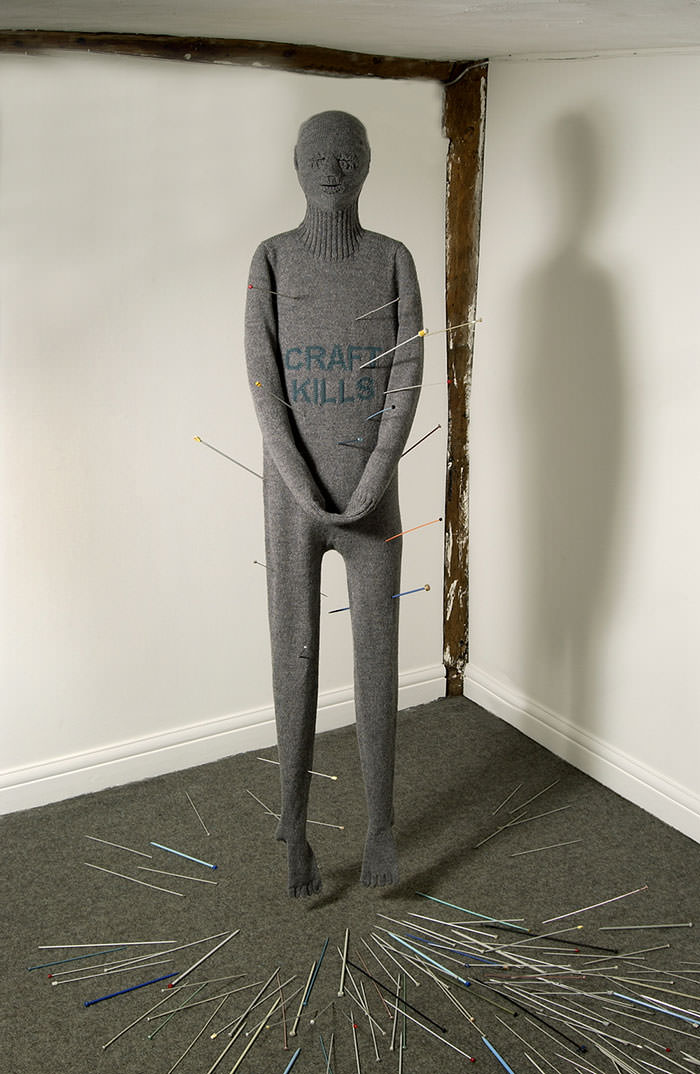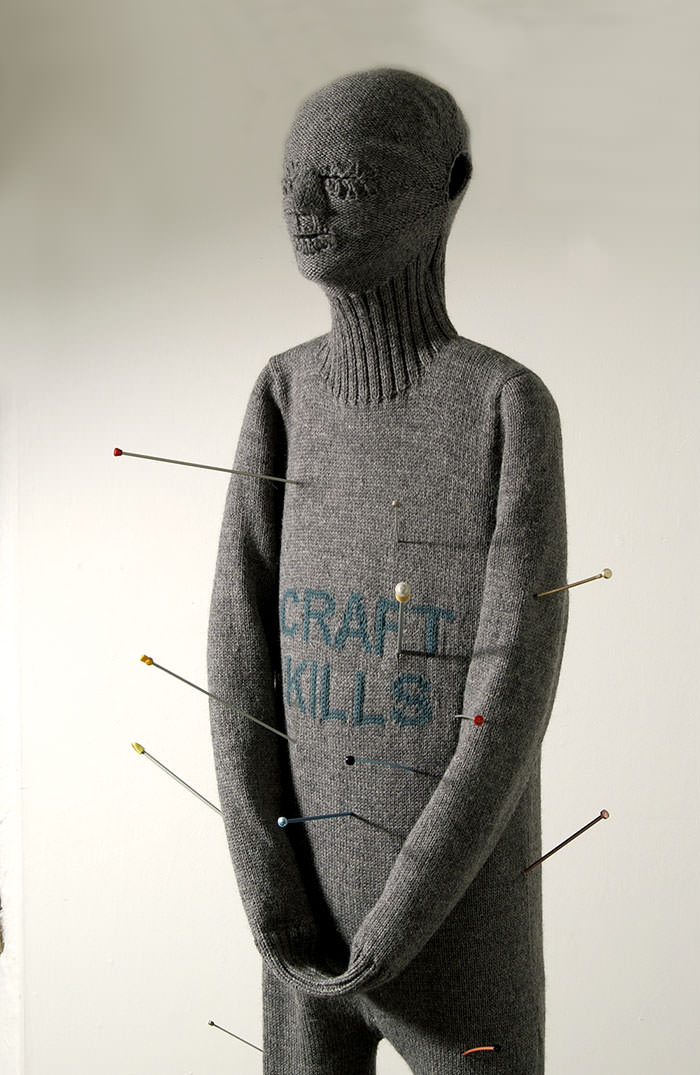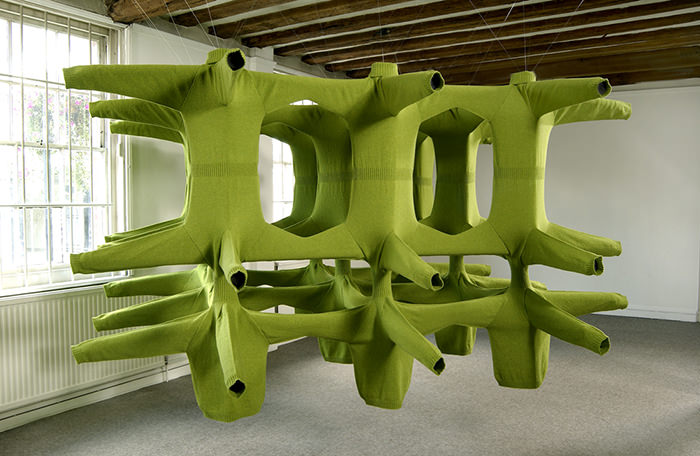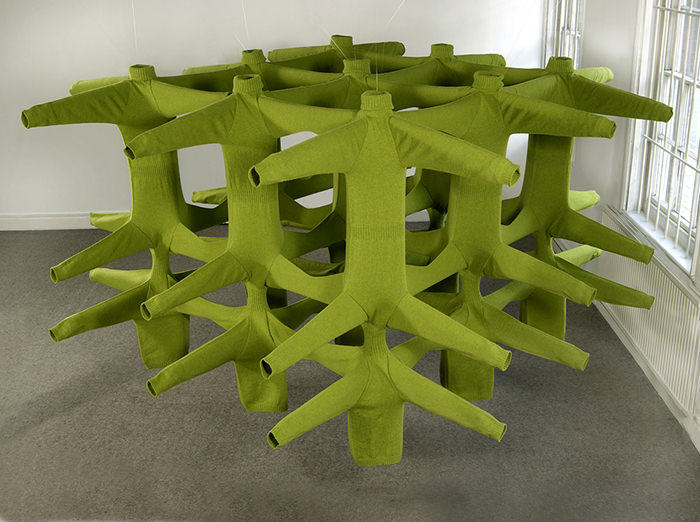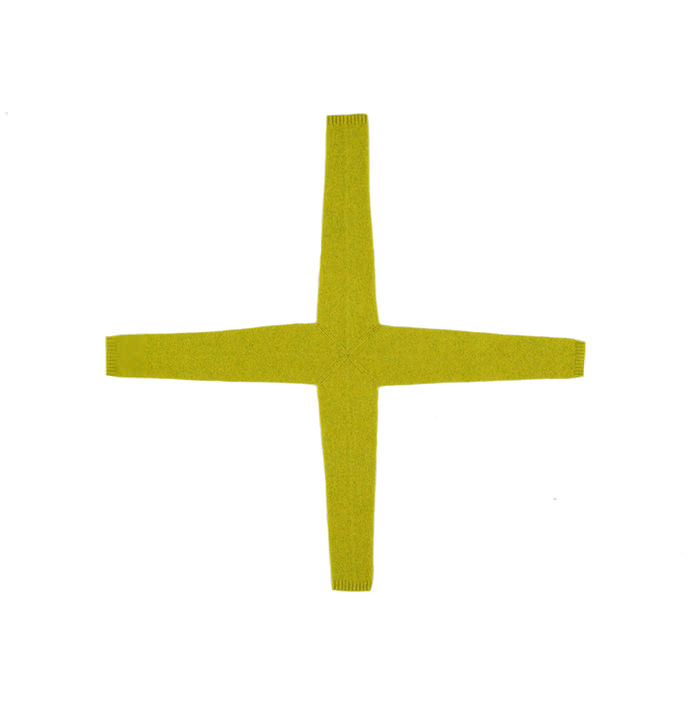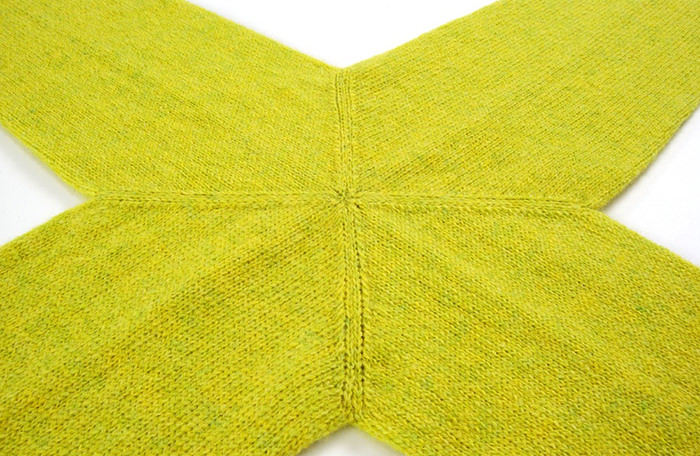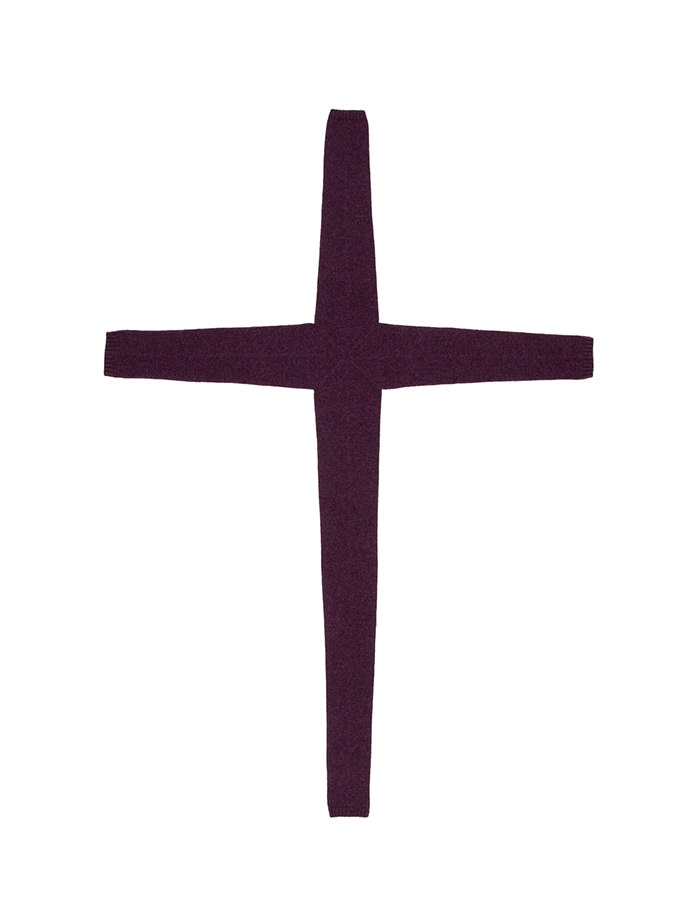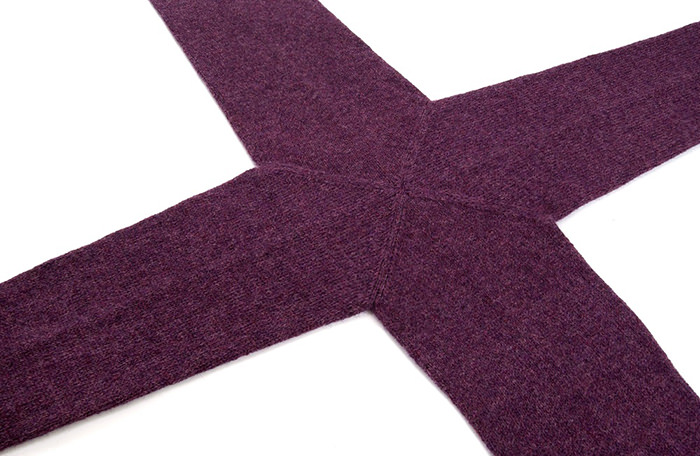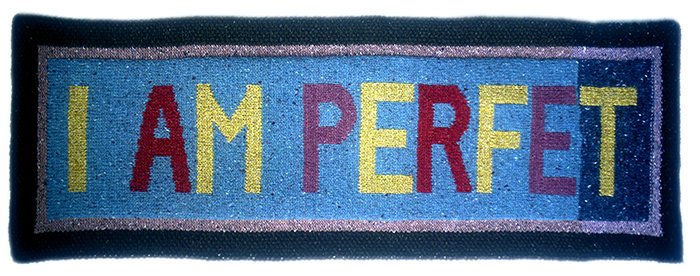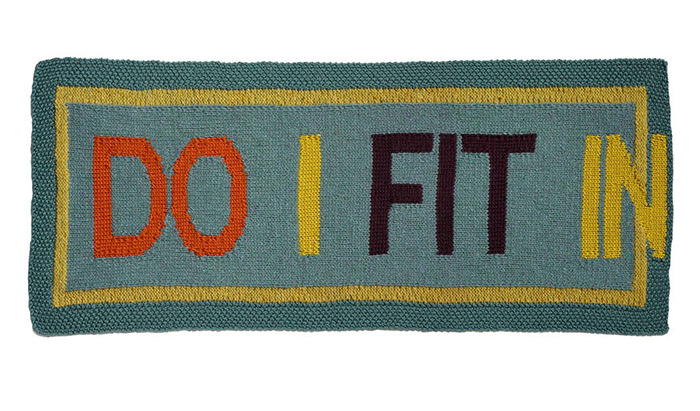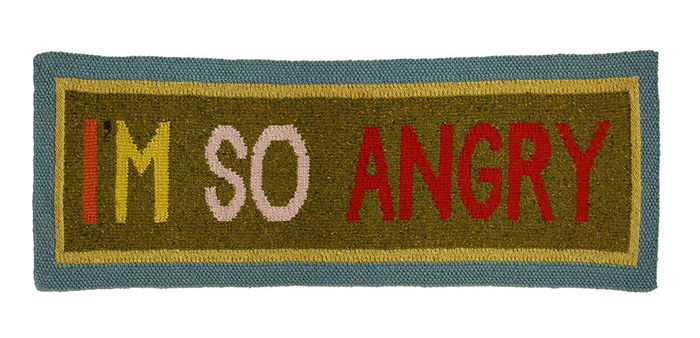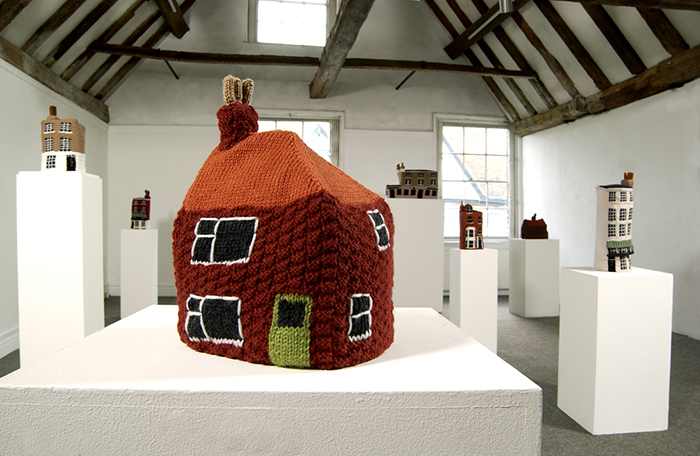
2002 Hand knitted wool, quilted lining fabric
Knitted by Jean Arkell
Commissioned by firstsite. Installed at firstsite at the Minories Art Gallery, Colchester
These are the homes of female killers or the houses where they committed their crimes.
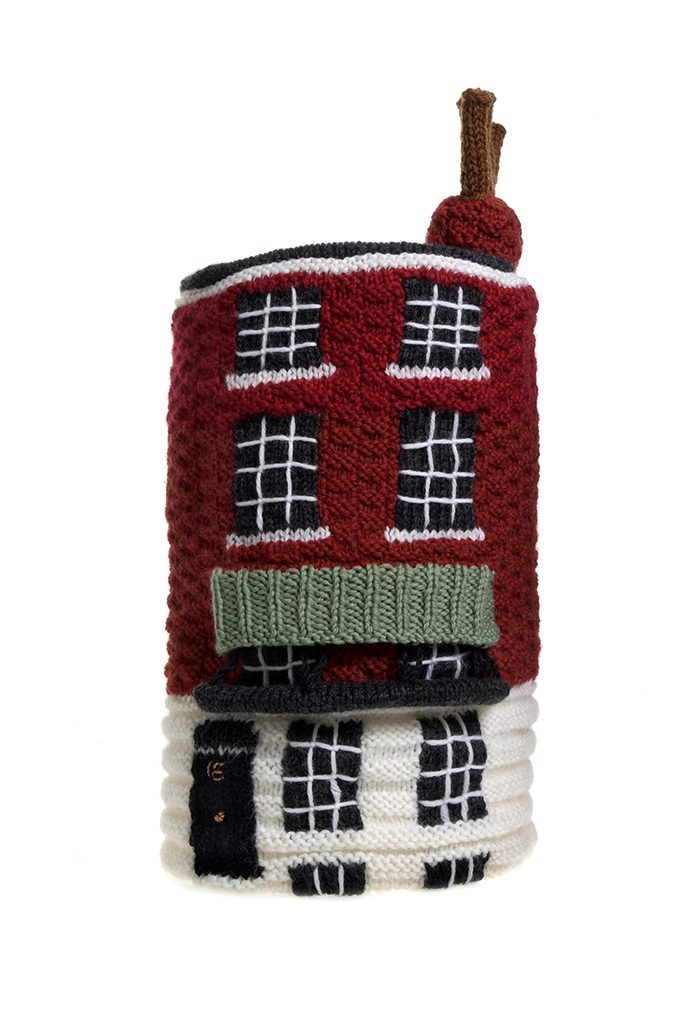
Christiana – 20 hours
16 Gloucester Place, Brighton, East Sussex – 1871
Mrs. Beard – 21 1/2 hours
64 Grand Parade, Brighton, East Sussex – 1871
Christiana Edmunds was a 43 year-old spinster who lived with her widowed mother. She had become infatuated with a married man, Dr. Beard. In September 1870 she brought a box of chocolates to the Beard’s house and insisted that Mrs. Beard eat some over a pot of tea. Christiana had filled these chocolate creams with strychnine. Immediately after eating one Mrs. Beard became severely ill. As a result Dr. Beard accused her of trying to poison his wife. Christiana denied the charge and set about trying to prove that there was a poisoner at large in Brighton. She would pay children to buy chocolate creams from the same sweet shop that she purchased the box of chocolates for Mrs. Beard from. She would inject these with strychnine, then re-wrap them and pay another child to return them. The innocent shop-keeper sold on these poisoned sweets. On 12 June 1871 this activity resulted in the death of 4-year-old Sidney Barker. Christiana even sent poisoned cakes and fruit through the mail, addressing some to herself, to try to emphasise her innocence. She was eventually caught and sentenced to death but when it transpired that she was mentally ill her sentence was commuted and she was sent to Broadmoor. She died there in 1907 aged 79. It later transpired that no less than four members of her immediate family had died as a result of mental illness.
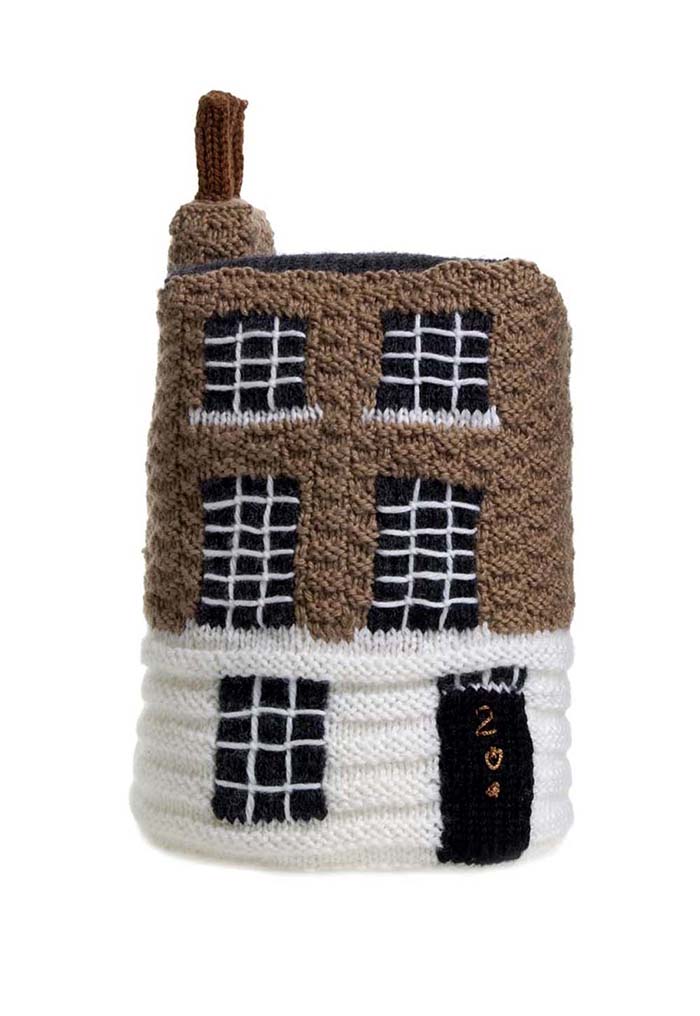
Eleanor – 13 hours
2 Ivor Street (formerly Priory Street), Camden, London – 1890
Mary Eleanor Wheeler, aged 24, was living with a Charles Creighton under the assumed name of Eleanor Pearcey. She was having an affair with a married man, Frank Hogg. On 24 October 1890 she invited his wife Phoebe to tea. In her own kitchen she battered Mrs. Hogg over the head with a poker and then slit her throat. She also killed the Hoggs’ 18-month-old baby daughter who Mrs. Hogg had brought along with her. Eleanor put the bodies into the baby’s pram. When it was dark she pushed the pram around disposing of the two bodies as she went. She was soon caught. Despite her claims that the blood in her kitchen came from a session of mouse killing she was found guilty and hanged at Newgate Prison on 23 December 1890. Her father had been hanged ten years earlier. Her last request was for a mysterious advertisement to be placed in a Madrid newspaper. It read “M.E.C.P. Last wish of M.E.W. Have not betrayed”
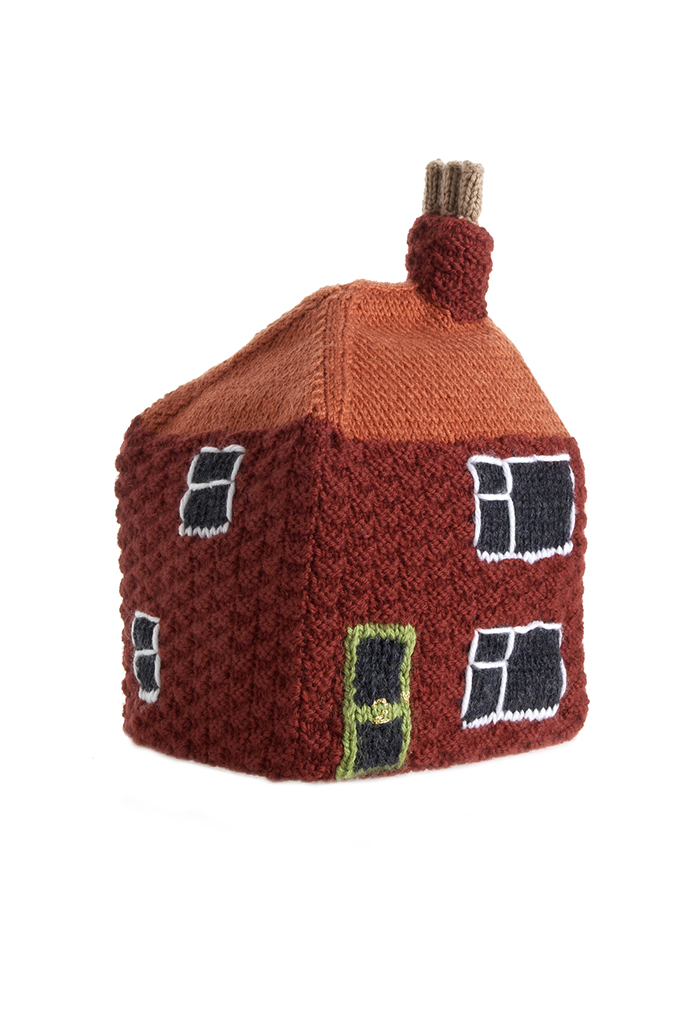
Ethel – 10 hours
2 Council Houses, Kirkby on Bain, Lincolnshire – 1934
Ethel Major, aged 43, lived with her husband Arthur. In 1934, after 16 years of marriage and a child of their own, Arthur discovered that Ethel already had an illegitimate daughter, Auriel. Their marriage started to deteriorate and Ethel began to imagine that he was now having an affair. As a result of her suspicions she started to poison him. Arthur eventually died on 24 May 1934 after eating corned beef sandwiches containing strychnine. Ethel was caught on the day of Arthur’s funeral when the police received an anonymous letter claiming that a neighbours dog had died after eating scraps of food from the Major’s household. After an examination of Arthur’s body and the exhumation of the dog she was charged. Ethel was found guilty of murder and hanged at Hull Prison on 19 December 1934.
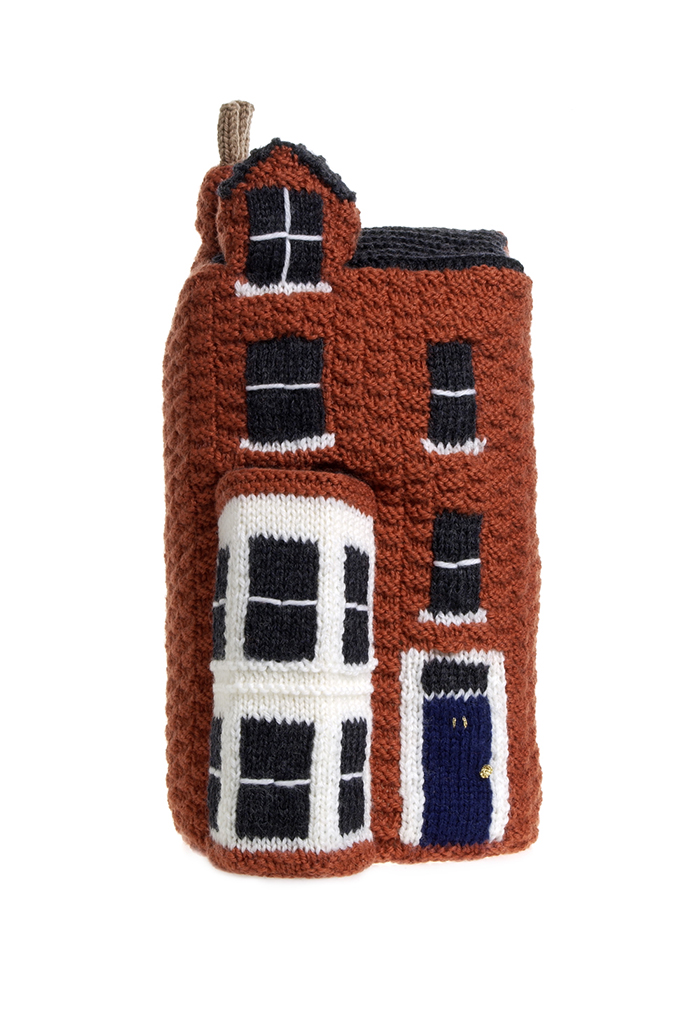
Styllou – 22 1/2 hours
Ground Floor, 11 South Hill Park, Hampstead, London – 1954
Styllou Christofi, a 52-year-old cypriot woman, murdered her german daughter-in-law, Hella, at the family home on 28 July 1954. Styllou had moved from Cyprus to live with her son and his family but problems soon arose. Styllou became increasingly jealous of her daughter-in-law and ended up hitting her over the head with an ash-plate from the stove, strangling her, soaking her body in petrol and setting fire to her in the back garden. Styllou, who spoke little english, raised the alarm, stating that she left Hella in the kitchen, went to bed but was woken by the smell of smoke. She was hanged at Holloway Prison on 13 December 1954. After her death it transpired that in 1925, when Styllou was a young woman, she had been acquitted of murdering her own mother-in-law.
Charlotte – 14 1/2 hours
Coombe Farm Cottages, Sherborne, Dorset – 1935
Charlotte Bryant, a 33-year-old illiterate mother of five, lived here with her husband Frederick. She enjoyed a drink and had a reputation as an amateur prostitute in the local pubs. Apparently her toothlessness and lice did not put the men off. Sometimes she even brought them home. One of these men was Leonard Parsons, a gypsy horse trader. Leonard became an occasional lodger in the Bryant household and Frederick did not seem to mind sharing Charlotte with him. Charlotte decided otherwise and started poisoning Frederick so that she would be free to marry Leonard. Frederick eventually died on 22 December 1935 after drinking a cup of Oxo containing arsenic. Charlotte was caught after the post-mortem on Frederick’s body. A friend also told the police that she had seen Charlotte trying to destroy a tin of weed-killer. She was hanged at Exeter Prison on 15 July 1936.
Ruth – 42 hours
The Magdala Tavern, South Hill Park, Hampstead, London – 1955
This is where 28-year-old Ruth Ellis shot her lover, racing driver David Blakely. Ruth, a twice married night club manageress, had been involved in a stormy relationship with Blakely for two years. When he tried to free himself from her she could not bear it and got herself a revolver to put an end to him. Spotting his van outside The Magdala Tavern on the evening of Sunday 2 April 1955 she waited for him to return. At 9.00pm, as he approached his van, she called out his name and shot him. As he tried to run away she shot him three more times. Apparently his blood mixed with the beer from a pierced flagon, that he was carrying, to make a frothy red river trickling down the gutter. There was much controversy surrounding this case. Just before she died she gave a sworn statement that her new lover , and friend of Blakelys, Desmond Cussen, had encouraged her to shoot Blakely. She was hanged at Holloway Prison on 13 July 1955, seven months after Styllou Christofi. She was the last woman to be hanged in Britain.
Curiously the last two women to be hanged in Britain, Ruth Ellis and Styllou Christofi, committed their crimes in the same road.
Photography: Douglas Atfield
